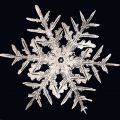Today in Smithsonian History: April 11, 1980

El Capitolio, Havana’s capitol building, is one of the most prominent buildings in Cuba. Prior to the revolution it housed the Cuban Congress. However, when Fidel Castro dismantled Congress it became the headquarters of the Cuban Academy of Sciences and the National Library of Science and Technology. (Photo by DirkvdM via Wikipedia CC BY-SA 2.5)
April 11, 1980 Secretary S. Dillon Ripley visits Cuba and signs a memorandum of understanding to further cooperation between the Smithsonian and the Cuban Academy of Sciences. The agreement was also signed by acting president of the Cuban Academy of Sciences, Dr. Tirso W. Saenz, and is intended to restore scholarly exchanges that were interrupted in 1969 when the United States and Cuba severed relations. Visits to Cuba by four Smithsonian scientists (Porter Kier, Eugene S. Morton, James F. Lynch and Storrs Olson) in October and November 1980 marked the first projects under the agreement.

Smithsonian staff and members of the Cuban Academy of Sciences touring Cuba in 1977. This is the first visit of Smithsonian scientists and administrators to Cuba since the 1959 Revolution. The group included Porter Kier and was facilitated by Alberado Moreno and Ted Reed. The visit included tours of the institutes of the Academy in Havana, the Zapata swamp, and the Zoo and Aquarium. This trip results in a Memorandum of Understanding that was signed by Secretary S. Dillon Ripley with the Cuban Academy to establish a program of exchange of scholars between SI and Cuba. (Photographer unknown)
Posted: 11 April 2019
- Categories:







